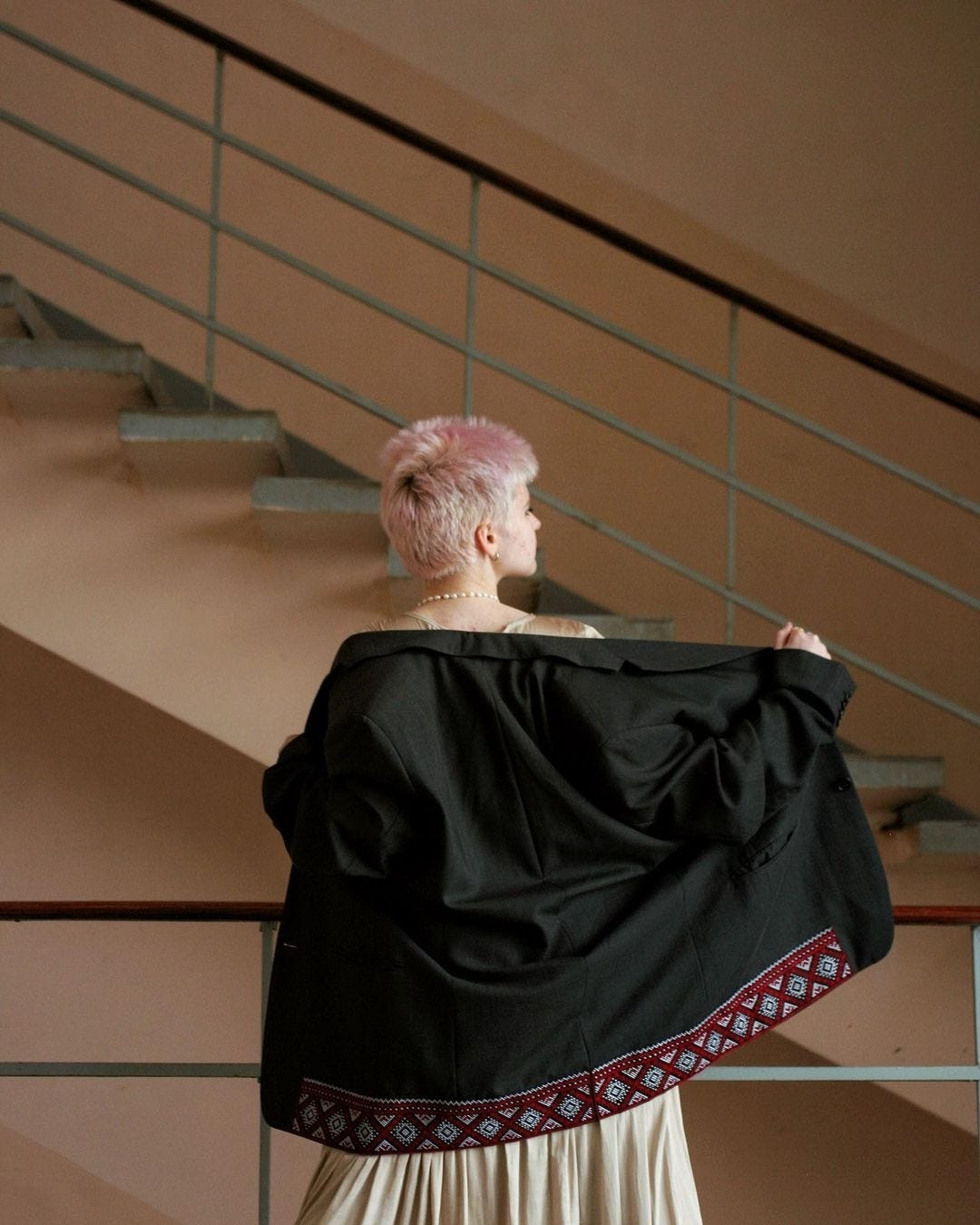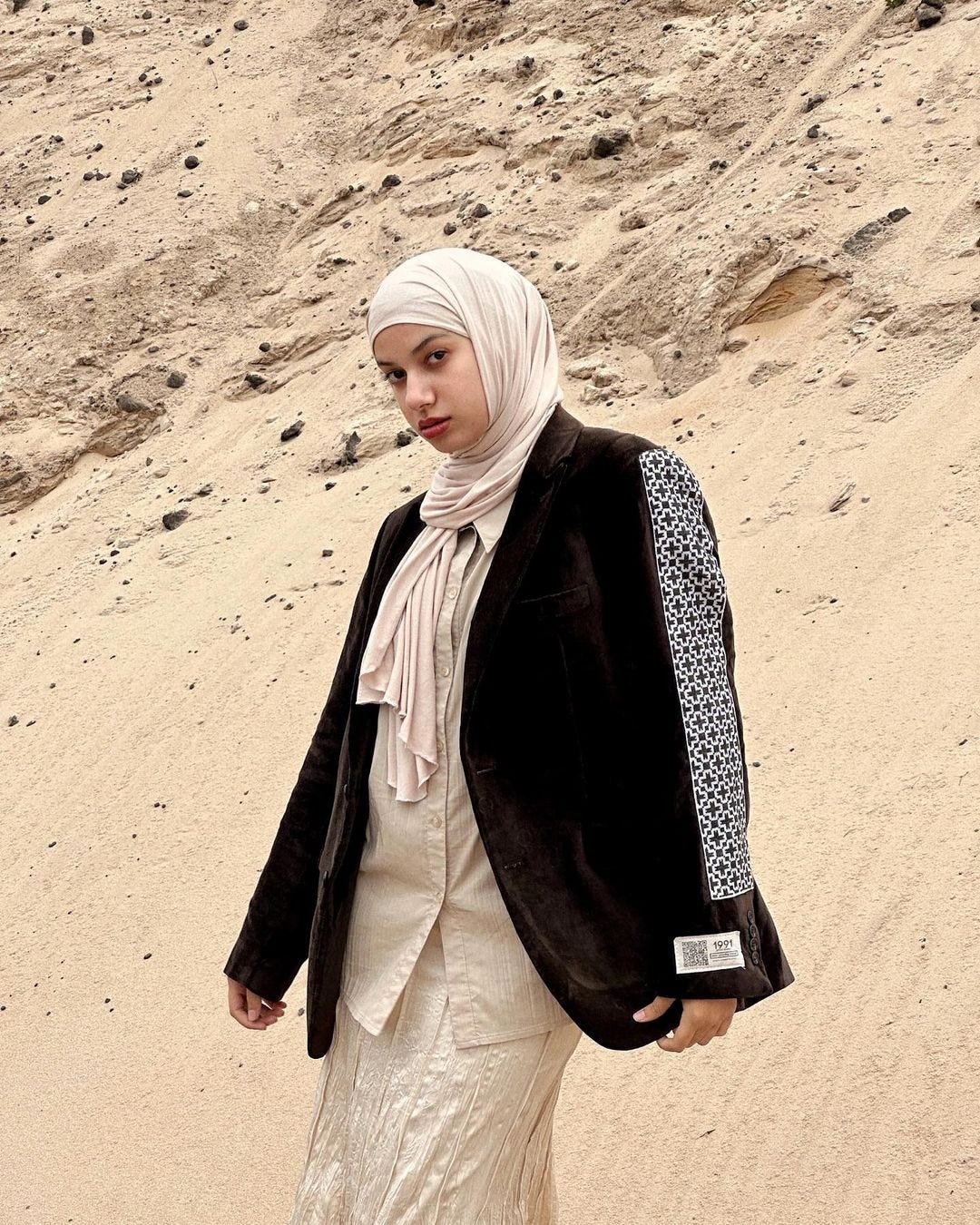
The Counteroffensive: Cutting-edge Ukrainian fashion goes beyond vyshyvankas
People worldwide celebrated Vyshyvanka Day last week, but Ukrainian fashion extends far beyond this traditional embroidered shirt - and Ukrainian designers are changing the game.
Women wearing traditional Ukrainian costumes dance around a bonfire during an Ivana-Kupala celebration in Kyiv, Ukraine, on July 6, 2022. (Alexey Furman/Getty Images)

Mariana Lastovyria
Reporter at The Counteroffensive
Editor’s Note: This article was published by the twice-weekly newsletter “The Counteroffensive with Tim Mak” on May 20, 2024, and has been re-published by the Kyiv Independent with permission. To subscribe to "The Counteroffensive," click here.

When Russia's full-scale war against Ukraine began, Anastasia Boyko considered fleeing Ukraine to keep her three-month-old baby safe. She instead decided to help Ukraine's war effort using her great-grandmother's love of embroidery. Generations of women in Anastasia's family are united by this heritage – she couldn't leave her family and their traditions behind.
Ukrainian fashion is undergoing a renaissance. Traditional elements are being incorporated into modern clothing, making their debut on catwalks and everyday wardrobes. Ukrainian designers are reviving national clothing traditions, and Ukrainians are incorporating these elements to stay connected with the culture that Russia is trying so desperately to destroy.
The "vyshyvanka," a traditional Ukrainian embroidered shirt, is perhaps the most famous piece of national clothing. However, other elements are also contributing to Ukraine's traditions, including the "plakhta" (an unsewn, belted skirt), the "sylianka" (a beaded necklace), the "sharovary" (loose pants traditionally worn by men), and the "kraika" (a narrow belt).
Anastasia's family has a proud tradition of making and wearing Ukrainian embroidery. For the older generations in her family, it was a hobby. At her graduation ceremony, Anastasia wore a traditional Ukrainian shirt – her grandmother embroidered the sleeves and her mother added an ornament in the center.
When the marketing agency Anastasia worked for was forced to close at the start of the full-scale invasion, she decided to remain in Ukraine to making clothing that embodied her identity and symbolized a protest agains the war.
Anastasia's signature is decorating vintage blazers with Ukrainian embroidery. Her work became an outrageous success after she unveiled her main collection in April 2022. Her brand, 1991 Ethno Studio, managed to sell out the entire collection.
“We created clothes with ethnic elements that can be worn every day with any outfit. They can be styled with joggers, skirts, and dresses. Wear it every day to work,” Anastasia told The Counteroffensive.
Before creating her line, Anastasia worked closely with an ethnologist to research the patterns used in traditional Ukrainian clothing. She found that embroidery was historically used to join pieces of fabric together at the seams to making clothing. Ukrainians would embellish the parts they wanted to conceal.
Ukrainian embroidery is full of different symbols. As it turns out, there's no agreed-upon guide on what each particular symbol means – each embroiderer defines the exact sense of the symbols they use.
Unfortunately, periods of Russification under the Soviet Union has created holes in the collective memory of Ukrainians regarding some of their traditional clothing. Moscow tried desperately to degrade traditional Ukrainian culture and clothing, dismissing it as "simple" and "backward," and reducing it to satiny red sharovary and cheap wreaths with plastic flowers.
“Ukrainians dressed in pastel shades. The national costume never had bright colors. We have never used satin, and the poppy has never been depicted in Ukrainian embroidery. They were regarded as tragic flowers,” explained Ukrainian designer Ksenia Tretyak.
Without proper representation, entire generations of Ukrainians perceived their cultural heritage as insignificant and ridiculous.




Fashion designer Sofia Rositska's parents taught her to admire Ukrainian traditions from a very young age. When she turned 19, Sofia founded Marevo, a clothing brand that reimagines and interprets Ukrainian heritage dress.
Back in April 2022, Sofia and her team took to decorating shopping bags and printing stickers and posters. They donated all of their income to the Ukrainian military. As the brand developed, her team moved on to bags, headscarves, and other accessories. For example, shoppers are seeking out taistras, over-the-shoulder bags that originated in Ukraine's Carpathian mountains.
“Most of the time, I create things I would like to wear myself. I can't find anything like it out there,” Sofia said.
Sofia's brand doesn't just stick to replicating ancient designs – she feels it's important to constantly reinterpret Ukrainian traditions to avoid mechanical repetition.
“In traditional dress, Ukrainian women usually wear headscarves,” explained Sofia. “If she is not married, the headscarf is ‘girlish’, letting her hair show. Whereas married women covered their heads completely.” These headscarves are one of the highlights of Ukrainian national costume, which have united generations of women. They are often passed down from mother to daughter.
Beaded necklaces of various styles also often frame Ukrainian women's necks. On type is the sylianka, where strips of beads are woven together to form geometric patterns and motifs inspired by Ukrainian folk art. Another necklace is the gerdan, which is made by stringing beads of different colors and sized on a thread or fishing line.
Many traditional Ukrainian clothing items have lost their original purpose. For instance, most Ukrainians no longer use the kraika (a narrow belt) to support unsewn clothing or wide shirt sleeves to hold a scalding pot. According to Sofia, Ukrainian designers give national dress a new lease of life.
“By adding these authentic elements, we remind ourselves of our roots and what we went through. It's a way of understanding Ukrainian cultural background,” Sofia concluded
Editor’s Note: The opinions expressed in the op-ed section are those of the authors and do not purport to reflect the views of the Kyiv Independent.












